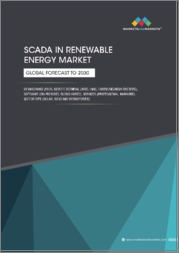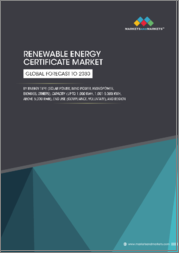
|
시장보고서
상품코드
1719225
수력발전 시장 : 세계 산업 규모, 점유율, 동향, 기회, 예측 - 용량별, 용도별, 지역별, 경쟁별(2020-2030년)예측Hydropower Generation Market - Global Industry Size, Share, Trends, Opportunity, and Forecast, Segmented By Capacity, By Application, By Region, By Competition, 2020-2030F |
||||||
세계 수력발전 시장은 2024년 4,318억 달러로 평가되며, 2030년에는 6,215억 달러에 달할 것으로 예상되며, 예측 기간 동안 6.1%의 CAGR로 성장할 것으로 예상됩니다.
깨끗하고 재생 가능한 에너지에 대한 전 세계적인 수요가 증가함에 따라 수력발전은 탄소 배출량을 줄이고 장기적인 기후 변화 목표를 달성하기 위한 중요한 솔루션으로 자리매김하고 있습니다. 성숙한 저배출 기술인 수력발전은 안정적이고 신뢰할 수 있는 전력을 공급하기 때문에 세계 에너지 믹스의 중요한 부분으로 자리 잡았습니다. 보조금 및 규제 프레임워크를 포함한 정부 정책은 전 세계적으로 수력발전의 도입을 가속화하는 데 중요한 역할을 하고 있습니다. 양수 발전 시스템은 특히 태양광과 풍력에너지 보급률이 높은 지역에서 전력망 안정화에 중요한 역할을 하고 있습니다. 오래된 인프라를 최신 터빈과 제어 시스템으로 개조하는 것은 효율성 향상과 비용 절감에 도움이 되고 있습니다. 시장 확대는 중국, 인도 등 아시아태평양 국가들이 주도하고 있으며, 산업화와 에너지 수요 증가로 인해 동남아시아 및 아프리카에서 더욱 탄력을 받을 것으로 예상됩니다. 수력발전은 자본 집약도, 환경 문제 등의 문제가 있지만, 신뢰할 수 있고 확장 가능한 재생에너지로서 지속적인 지지를 받고 있습니다.
| 시장 개요 | |
|---|---|
| 예측 기간 | 2026-2030년 |
| 시장 규모 : 2024년 | 4,318억 달러 |
| 시장 규모 : 2030년 | 6,215억 달러 |
| CAGR : 2025-2030년 | 6.1% |
| 급성장 부문 | 소수력발전소 |
| 최대 시장 | 북미 |
시장 촉진요인
전 세계 재생에너지 수요 증가
주요 시장 과제
높은 설비투자와 긴 프로젝트 기간
주요 시장 동향
소규모 분산형 수력발전 시스템으로의 전환
목차
제1장 개요
제2장 조사 방법
제3장 주요 요약
제4장 고객의 소리
제5장 세계의 수력발전 시장 전망
- 시장 규모 및 예측
- 금액별
- 시장 점유율과 예측
- 용량별(소수력발전소, 중수력발전소, 대수력발전소)
- 용도별(상업, 산업, 주택)
- 지역별(북미, 유럽, 남미, 중동 및 아프리카, 아시아태평양)
- 기업별(2024)
- 시장 맵
제6장 북미의 수력발전 시장 전망
- 시장 규모 및 예측
- 시장 점유율과 예측
- 북미 : 국가별 분석
- 미국
- 캐나다
- 멕시코
제7장 유럽의 수력발전 시장 전망
- 시장 규모 및 예측
- 시장 점유율과 예측
- 유럽 : 국가별 분석
- 독일
- 프랑스
- 영국
- 이탈리아
- 스페인
제8장 아시아태평양의 수력발전 시장 전망
- 시장 규모 및 예측
- 시장 점유율과 예측
- 아시아태평양 : 국가별 분석
- 중국
- 인도
- 일본
- 한국
- 호주
제9장 중동 및 아프리카의 수력발전 시장 전망
- 시장 규모 및 예측
- 시장 점유율과 예측
- 중동 및 아프리카 : 국가별 분석
- 사우디아라비아
- 아랍에미리트
- 남아프리카공화국
제10장 남미의 수력발전 시장 전망
- 시장 규모 및 예측
- 시장 점유율과 예측
- 남미 : 국가별 분석
- 브라질
- 콜롬비아
- 아르헨티나
제11장 시장 역학
- 성장 촉진요인
- 과제
제12장 시장 동향과 발전
- 인수합병
- 제품 출시
- 최근 동향
제13장 기업 개요
- Andritz Hydro USA Inc.
- E. Energy
- China Hydroelectric Corporation
- Sinohydro Corporation
- IHI Corporation
- Alstom Hydro
- CPFL Energia S.A.
- ABB Ltd.
- China Three Gorges Corporation
- Gerdau S.A.
제14장 전략적 제안
제15장 조사 회사 소개 및 면책사항
ksm 25.05.23The Global Hydropower Generation Market was valued at USD 431.8 billion in 2024 and is expected to reach USD 621.5 billion by 2030, growing at a CAGR of 6.1% during the forecast period. Rising global demand for clean and renewable energy is positioning hydropower as a key solution for reducing carbon emissions and achieving long-term climate goals. As a mature, low-emission technology, hydropower delivers stable and reliable electricity, making it a vital part of the global energy mix. Government policies, including subsidies and regulatory frameworks, are playing a crucial role in accelerating hydropower adoption worldwide. Pumped storage hydropower systems are also gaining prominence for their role in grid stability, especially in regions with high solar and wind energy penetration. Retrofitting older infrastructure with modern turbines and control systems is helping enhance efficiency and reduce costs. Market expansion is particularly strong in Asia-Pacific, with countries like China and India leading developments, and further momentum is being observed across Southeast Asia and Africa due to growing industrialization and energy demand. Despite challenges related to capital intensity and environmental concerns, hydropower continues to gain traction as a dependable and scalable renewable energy source.
| Market Overview | |
|---|---|
| Forecast Period | 2026-2030 |
| Market Size 2024 | USD 431.8 Billion |
| Market Size 2030 | USD 621.5 Billion |
| CAGR 2025-2030 | 6.1% |
| Fastest Growing Segment | Small Hydro Power Plant |
| Largest Market | North America |
Key Market Drivers
Increasing Global Demand for Renewable Energy
The shift toward sustainable energy solutions is a primary driver of growth in the hydropower generation market. Hydropower, known for its low carbon footprint and reliability, is increasingly being adopted as nations work to meet climate goals and reduce reliance on fossil fuels. Many governments are integrating hydropower into national strategies to reach net-zero emissions by mid-century. For instance, Spain's Endesa, a subsidiary of Enel, recently acquired 626 MW of hydro assets from Acciona Energia, underlining the growing investment in the sector. Beyond emissions reduction, hydropower plays a crucial role in ensuring grid stability, especially as countries expand wind and solar power generation. It serves as a backup energy source and helps smooth out the intermittency of other renewables. Rapid industrialization and urbanization in emerging economies further amplify the need for reliable electricity, boosting hydropower demand. In Germany, the state of Bavaria has announced plans to acquire over 85 hydropower plants from Uniper by 2030 to reinforce local control over energy infrastructure, emphasizing hydropower's strategic importance in national energy security.
Key Market Challenges
High Capital Investment and Long Project Timelines
A major obstacle in the hydropower generation market is the high upfront cost associated with building new facilities. Developing a hydropower project involves large-scale infrastructure investments in dams, reservoirs, turbines, and electrical systems, often running into billions of dollars. These projects also face long development timelines due to the complexity of construction and the need for thorough environmental and regulatory approvals. In many cases, the extended duration before achieving return on investment discourages private investors and poses financing challenges, especially in countries with constrained budgets or limited access to capital markets. Additionally, hydropower projects are vulnerable to fluctuations in material costs and shifts in political or economic conditions, which can delay or derail progress. Even in developed nations, these financial and regulatory barriers slow new project launches and limit expansion opportunities. As a result, while hydropower is highly beneficial in the long term, its capital intensity and slow ROI remain persistent challenges that hinder faster adoption, particularly in developing regions.
Key Market Trends
Shift Toward Small-Scale and Decentralized Hydropower Systems
A key trend gaining momentum in the hydropower generation market is the adoption of small-scale and decentralized systems. Unlike traditional large hydropower plants, small-scale solutions are more affordable, quicker to implement, and environmentally less intrusive. These systems are especially valuable in remote or off-grid areas, providing a practical option for clean energy generation without the extensive infrastructure required for large dams. Micro- and mini-hydropower systems are increasingly used to power villages, agricultural operations, and small industries. Their scalability and cost-efficiency make them an ideal choice for developing economies focused on rural electrification and energy access. Countries in Asia-Pacific, Africa, and Southeast Asia are actively exploring these solutions to meet growing energy needs while reducing dependence on fossil fuels. Technological advancements have improved the efficiency and affordability of small hydropower systems, helping position them as a sustainable alternative within the renewable energy portfolio. As governments and international organizations continue to promote energy access in underserved regions, the trend toward decentralized hydropower is expected to strengthen significantly.
Key Market Players
- Andritz Hydro USA Inc.
- E. Energy
- China Hydroelectric Corporation
- Sinohydro Corporation
- IHI Corporation
- Alstom Hydro
- CPFL Energia S.A.
- ABB Ltd.
- China Three Gorges Corporation
- Gerdau S.A.
Report Scope:
In this report, the Global Hydropower Generation Market has been segmented into the following categories, in addition to the industry trends which have also been detailed below:
Hydropower Generation Market, By Capacity:
- Small Hydro Power Plant
- Medium Hydro Power Plant
- Large Hydro Power Plant
Hydropower Generation Market, By Application:
- Commercial
- Industrial
- Residential
Hydropower Generation Market, By Region:
- North America
- United States
- Canada
- Mexico
- Europe
- Germany
- France
- United Kingdom
- Italy
- Spain
- Asia Pacific
- China
- India
- Japan
- South Korea
- Australia
- South America
- Brazil
- Colombia
- Argentina
- Middle East & Africa
- Saudi Arabia
- UAE
- South Africa
Competitive Landscape
Company Profiles: Detailed analysis of the major companies present in the Global Hydropower Generation Market.
Available Customizations:
Global Hydropower Generation Market report with the given market data, Tech Sci Research offers customizations according to a company's specific needs. The following customization options are available for the report:
Company Information
- Detailed analysis and profiling of additional market players (up to five).
Table of Contents
1. Product Overview
- 1.1. Market Definition
- 1.2. Scope of the Market
- 1.2.1. Markets Covered
- 1.2.2. Years Considered for Study
- 1.2.3. Key Market Segmentations
2. Research Methodology
- 2.1. Objective of the Study
- 2.2. Baseline Methodology
- 2.3. Key Industry Partners
- 2.4. Major Association and Secondary Sources
- 2.5. Forecasting Methodology
- 2.6. Data Triangulation & Validation
- 2.7. Assumptions and Limitations
3. Executive Summary
- 3.1. Overview of the Market
- 3.2. Overview of Key Market Segmentations
- 3.3. Overview of Key Market Players
- 3.4. Overview of Key Regions/Countries
- 3.5. Overview of Market Drivers, Challenges, and Trends
4. Voice of Customer
5. Global Hydropower Generation Market Outlook
- 5.1. Market Size & Forecast
- 5.1.1. By Value
- 5.2. Market Share & Forecast
- 5.2.1. By Capacity (Small Hydro Power Plant, Medium Hydro Power Plant, Large Hydro Power Plant)
- 5.2.2. By Application (Commercial, Industrial, Residential)
- 5.2.3. By Region (North America, Europe, South America, Middle East & Africa, Asia Pacific)
- 5.3. By Company (2024)
- 5.4. Market Map
6. North America Hydropower Generation Market Outlook
- 6.1. Market Size & Forecast
- 6.1.1. By Value
- 6.2. Market Share & Forecast
- 6.2.1. By Capacity
- 6.2.2. By Application
- 6.2.3. By Country
- 6.3. North America: Country Analysis
- 6.3.1. United States Hydropower Generation Market Outlook
- 6.3.1.1. Market Size & Forecast
- 6.3.1.1.1. By Value
- 6.3.1.2. Market Share & Forecast
- 6.3.1.2.1. By Capacity
- 6.3.1.2.2. By Application
- 6.3.1.1. Market Size & Forecast
- 6.3.2. Canada Hydropower Generation Market Outlook
- 6.3.2.1. Market Size & Forecast
- 6.3.2.1.1. By Value
- 6.3.2.2. Market Share & Forecast
- 6.3.2.2.1. By Capacity
- 6.3.2.2.2. By Application
- 6.3.2.1. Market Size & Forecast
- 6.3.3. Mexico Hydropower Generation Market Outlook
- 6.3.3.1. Market Size & Forecast
- 6.3.3.1.1. By Value
- 6.3.3.2. Market Share & Forecast
- 6.3.3.2.1. By Capacity
- 6.3.3.2.2. By Application
- 6.3.3.1. Market Size & Forecast
- 6.3.1. United States Hydropower Generation Market Outlook
7. Europe Hydropower Generation Market Outlook
- 7.1. Market Size & Forecast
- 7.1.1. By Value
- 7.2. Market Share & Forecast
- 7.2.1. By Capacity
- 7.2.2. By Application
- 7.2.3. By Country
- 7.3. Europe: Country Analysis
- 7.3.1. Germany Hydropower Generation Market Outlook
- 7.3.1.1. Market Size & Forecast
- 7.3.1.1.1. By Value
- 7.3.1.2. Market Share & Forecast
- 7.3.1.2.1. By Capacity
- 7.3.1.2.2. By Application
- 7.3.1.1. Market Size & Forecast
- 7.3.2. France Hydropower Generation Market Outlook
- 7.3.2.1. Market Size & Forecast
- 7.3.2.1.1. By Value
- 7.3.2.2. Market Share & Forecast
- 7.3.2.2.1. By Capacity
- 7.3.2.2.2. By Application
- 7.3.2.1. Market Size & Forecast
- 7.3.3. United Kingdom Hydropower Generation Market Outlook
- 7.3.3.1. Market Size & Forecast
- 7.3.3.1.1. By Value
- 7.3.3.2. Market Share & Forecast
- 7.3.3.2.1. By Capacity
- 7.3.3.2.2. By Application
- 7.3.3.1. Market Size & Forecast
- 7.3.4. Italy Hydropower Generation Market Outlook
- 7.3.4.1. Market Size & Forecast
- 7.3.4.1.1. By Value
- 7.3.4.2. Market Share & Forecast
- 7.3.4.2.1. By Capacity
- 7.3.4.2.2. By Application
- 7.3.4.1. Market Size & Forecast
- 7.3.5. Spain Hydropower Generation Market Outlook
- 7.3.5.1. Market Size & Forecast
- 7.3.5.1.1. By Value
- 7.3.5.2. Market Share & Forecast
- 7.3.5.2.1. By Capacity
- 7.3.5.2.2. By Application
- 7.3.5.1. Market Size & Forecast
- 7.3.1. Germany Hydropower Generation Market Outlook
8. Asia Pacific Hydropower Generation Market Outlook
- 8.1. Market Size & Forecast
- 8.1.1. By Value
- 8.2. Market Share & Forecast
- 8.2.1. By Capacity
- 8.2.2. By Application
- 8.2.3. By Country
- 8.3. Asia Pacific: Country Analysis
- 8.3.1. China Hydropower Generation Market Outlook
- 8.3.1.1. Market Size & Forecast
- 8.3.1.1.1. By Value
- 8.3.1.2. Market Share & Forecast
- 8.3.1.2.1. By Capacity
- 8.3.1.2.2. By Application
- 8.3.1.1. Market Size & Forecast
- 8.3.2. India Hydropower Generation Market Outlook
- 8.3.2.1. Market Size & Forecast
- 8.3.2.1.1. By Value
- 8.3.2.2. Market Share & Forecast
- 8.3.2.2.1. By Capacity
- 8.3.2.2.2. By Application
- 8.3.2.1. Market Size & Forecast
- 8.3.3. Japan Hydropower Generation Market Outlook
- 8.3.3.1. Market Size & Forecast
- 8.3.3.1.1. By Value
- 8.3.3.2. Market Share & Forecast
- 8.3.3.2.1. By Capacity
- 8.3.3.2.2. By Application
- 8.3.3.1. Market Size & Forecast
- 8.3.4. South Korea Hydropower Generation Market Outlook
- 8.3.4.1. Market Size & Forecast
- 8.3.4.1.1. By Value
- 8.3.4.2. Market Share & Forecast
- 8.3.4.2.1. By Capacity
- 8.3.4.2.2. By Application
- 8.3.4.1. Market Size & Forecast
- 8.3.5. Australia Hydropower Generation Market Outlook
- 8.3.5.1. Market Size & Forecast
- 8.3.5.1.1. By Value
- 8.3.5.2. Market Share & Forecast
- 8.3.5.2.1. By Capacity
- 8.3.5.2.2. By Application
- 8.3.5.1. Market Size & Forecast
- 8.3.1. China Hydropower Generation Market Outlook
9. Middle East & Africa Hydropower Generation Market Outlook
- 9.1. Market Size & Forecast
- 9.1.1. By Value
- 9.2. Market Share & Forecast
- 9.2.1. By Capacity
- 9.2.2. By Application
- 9.2.3. By Country
- 9.3. Middle East & Africa: Country Analysis
- 9.3.1. Saudi Arabia Hydropower Generation Market Outlook
- 9.3.1.1. Market Size & Forecast
- 9.3.1.1.1. By Value
- 9.3.1.2. Market Share & Forecast
- 9.3.1.2.1. By Capacity
- 9.3.1.2.2. By Application
- 9.3.1.1. Market Size & Forecast
- 9.3.2. UAE Hydropower Generation Market Outlook
- 9.3.2.1. Market Size & Forecast
- 9.3.2.1.1. By Value
- 9.3.2.2. Market Share & Forecast
- 9.3.2.2.1. By Capacity
- 9.3.2.2.2. By Application
- 9.3.2.1. Market Size & Forecast
- 9.3.3. South Africa Hydropower Generation Market Outlook
- 9.3.3.1. Market Size & Forecast
- 9.3.3.1.1. By Value
- 9.3.3.2. Market Share & Forecast
- 9.3.3.2.1. By Capacity
- 9.3.3.2.2. By Application
- 9.3.3.1. Market Size & Forecast
- 9.3.1. Saudi Arabia Hydropower Generation Market Outlook
10. South America Hydropower Generation Market Outlook
- 10.1. Market Size & Forecast
- 10.1.1. By Value
- 10.2. Market Share & Forecast
- 10.2.1. By Capacity
- 10.2.2. By Application
- 10.2.3. By Country
- 10.3. South America: Country Analysis
- 10.3.1. Brazil Hydropower Generation Market Outlook
- 10.3.1.1. Market Size & Forecast
- 10.3.1.1.1. By Value
- 10.3.1.2. Market Share & Forecast
- 10.3.1.2.1. By Capacity
- 10.3.1.2.2. By Application
- 10.3.1.1. Market Size & Forecast
- 10.3.2. Colombia Hydropower Generation Market Outlook
- 10.3.2.1. Market Size & Forecast
- 10.3.2.1.1. By Value
- 10.3.2.2. Market Share & Forecast
- 10.3.2.2.1. By Capacity
- 10.3.2.2.2. By Application
- 10.3.2.1. Market Size & Forecast
- 10.3.3. Argentina Hydropower Generation Market Outlook
- 10.3.3.1. Market Size & Forecast
- 10.3.3.1.1. By Value
- 10.3.3.2. Market Share & Forecast
- 10.3.3.2.1. By Capacity
- 10.3.3.2.2. By Application
- 10.3.3.1. Market Size & Forecast
- 10.3.1. Brazil Hydropower Generation Market Outlook
11. Market Dynamics
- 11.1. Drivers
- 11.2. Challenges
12. Market Trends and Developments
- 12.1. Merger & Acquisition (If Any)
- 12.2. Product Launches (If Any)
- 12.3. Recent Developments
13. Company Profiles
- 13.1. Andritz Hydro USA Inc.
- 13.1.1. Business Overview
- 13.1.2. Key Revenue and Financials
- 13.1.3. Recent Developments
- 13.1.4. Key Personnel
- 13.1.5. Key Product/Services Offered
- 13.2. E. Energy
- 13.3. China Hydroelectric Corporation
- 13.4. Sinohydro Corporation
- 13.5. IHI Corporation
- 13.6. Alstom Hydro
- 13.7. CPFL Energia S.A.
- 13.8. ABB Ltd.
- 13.9. China Three Gorges Corporation
- 13.10. Gerdau S.A.



















